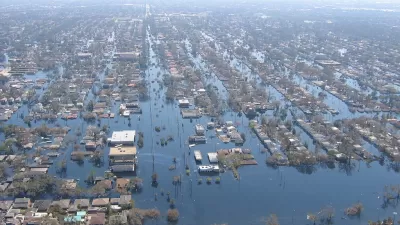The highly anticipated "job speech" by President Obama this evening will address, among other issues, the infrastructure bank. Michael Likosky argues that it is the only possible revenue stream for the nation's $600 billion infrastructure projects.
The idea behind the infrastructure bank (I-Bank) is straightforward. Upon the creation of a federal agency that oversees the financial arrangements of infrastructure projects, the government would provide incentives in the forms of loans and loan guarantees just enough to attract private investors who would pick up the tab and finance the rest.
But the legislation faces three major hurdles, according to Likosky. Unlike other economic stimulus measures, the I-Bank does not deliver instant results. This makes it a tough sell among politicians with impatient constituents. Additionally, the initial investment of $5 billion per year for several years lies on the high end of the spending gamut relative to the budget deficit.
Then there is the inherent political gridlock in Washington estranged of bipartisanship. Deploring federal involvement in just about every proposed legislation, congressional Republicans prefer the state-run alternative like the California Infrastructure and Economic Development Bank. "[C]onservatives don't like government's involvement in the I-Bank, even as facilitator. They think it will merely add more bureaucracy," notes CNN Money reporter Chris Isidore.
FULL STORY: Infrastructure Bank: Fixing how we fix roads

Planetizen Federal Action Tracker
A weekly monitor of how Trump’s orders and actions are impacting planners and planning in America.

Restaurant Patios Were a Pandemic Win — Why Were They so Hard to Keep?
Social distancing requirements and changes in travel patterns prompted cities to pilot new uses for street and sidewalk space. Then it got complicated.

Maui's Vacation Rental Debate Turns Ugly
Verbal attacks, misinformation campaigns and fistfights plague a high-stakes debate to convert thousands of vacation rentals into long-term housing.

In California Battle of Housing vs. Environment, Housing Just Won
A new state law significantly limits the power of CEQA, an environmental review law that served as a powerful tool for blocking new development.

Boulder Eliminates Parking Minimums Citywide
Officials estimate the cost of building a single underground parking space at up to $100,000.

Orange County, Florida Adopts Largest US “Sprawl Repair” Code
The ‘Orange Code’ seeks to rectify decades of sprawl-inducing, car-oriented development.
Urban Design for Planners 1: Software Tools
This six-course series explores essential urban design concepts using open source software and equips planners with the tools they need to participate fully in the urban design process.
Planning for Universal Design
Learn the tools for implementing Universal Design in planning regulations.
Heyer Gruel & Associates PA
JM Goldson LLC
Custer County Colorado
City of Camden Redevelopment Agency
City of Astoria
Transportation Research & Education Center (TREC) at Portland State University
Jefferson Parish Government
Camden Redevelopment Agency
City of Claremont





























